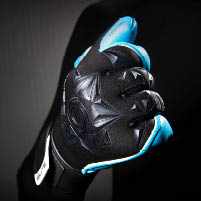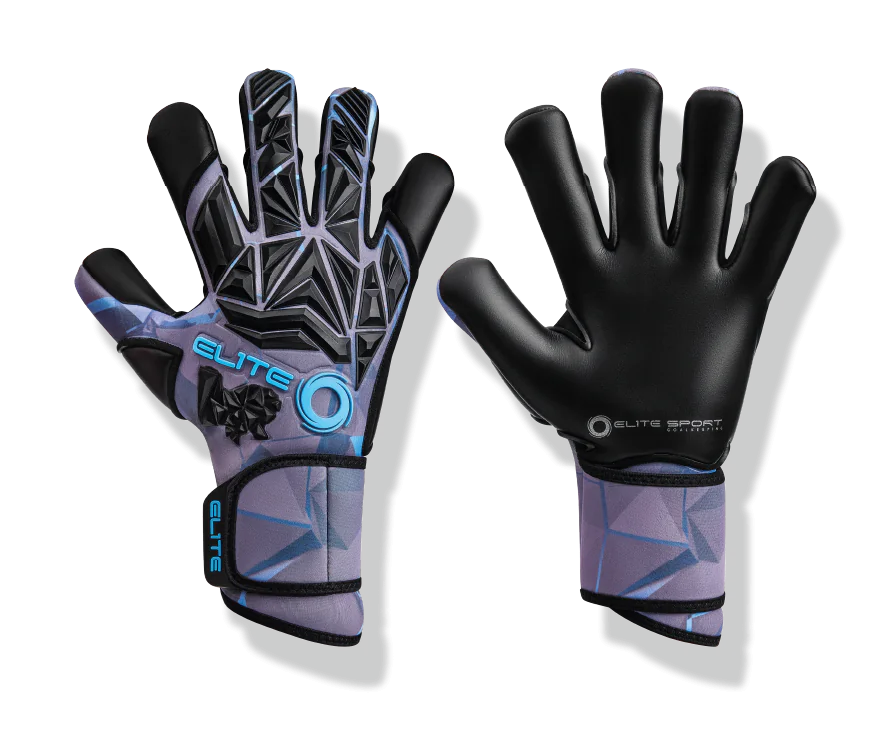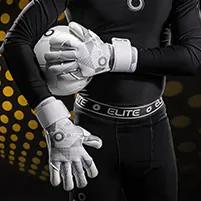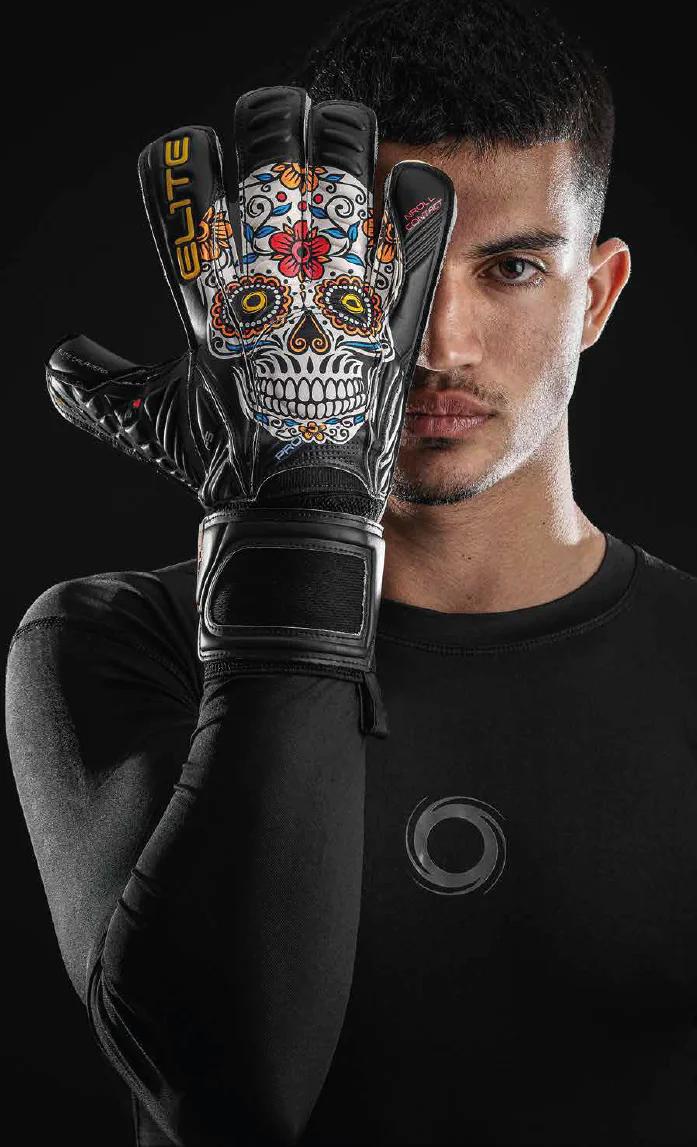
In the fast-paced world of soccer, every player has a role—but none quite as critical as the goalkeeper. As the last line of defense, goalkeepers need to rely on lightning-fast reflexes, sharp focus, and top-tier gear to keep the ball out of the net. Among the most essential tools in a goalkeeper’s arsenal are their goalie gloves—the ultimate blend of protection, grip, and performance.
Unlike outfield players who rely on footwork and tactics, a goalkeeper’s game is all about control, anticipation, and confidence. And when it comes to catching, punching, or blocking shots, the right pair of gloves can mean the difference between a game-saving moment and a costly mistake. Whether you're a beginner just learning to dive or a seasoned keeper defending penalty shots, understanding what makes a great pair of goalie gloves is crucial.
Let’s explore what sets high-performance gloves apart, how they affect your game, and why choosing the right pair is essential to every goalkeeper's success.
The Anatomy of Quality Goalie Gloves
At first glance, all goalie gloves might look the same—but dig deeper, and you’ll find that every detail matters. From the materials to the stitching, modern goalie gloves are crafted with precision to serve different playing conditions, techniques, and personal preferences.
The glove is typically made up of four main parts: the palm, the backhand, the closure system, and the fingers. The palm is responsible for grip and control, usually made with latex that varies in softness and durability depending on whether it's meant for training or match play. The softer the latex, the better the grip—but with that comes less durability. That’s why goalkeepers often have separate gloves for practice and match days.
The backhand, meanwhile, provides cushioning and protection when punching the ball. It must strike the right balance between flexibility and padding, especially when blocking high-speed shots. The closure system ensures a snug fit around the wrist, with options ranging from velcro straps to elastic cuffs. The design keeps the gloves secure without restricting movement.
Why Goalie Gloves Are More Than Just Hand Protection
You might assume that goalie gloves are only meant to protect the hands, but that’s just one part of the equation. A good pair of gloves enhances a keeper’s performance by offering superior grip, improved ball control, and added confidence during high-pressure moments.
When you put on the right pair of goalie gloves, you can feel the difference instantly. The enhanced grip helps you hold onto the ball even in wet or muddy conditions, minimizing the risk of spills or deflections. For goalkeepers, every touch matters—especially when saving penalty kicks or challenging aerial balls.
Additionally, gloves are engineered to absorb shock from powerful shots. Modern goalkeeping gloves often feature finger spines or finger protection technology that helps reduce the risk of hyperextension. This can be especially important for youth players or keepers recovering from previous injuries. The added support can give players peace of mind, allowing them to dive and stretch without hesitation.
Finding the Right Fit for Your Style
Choosing goalie gloves isn’t just about picking the best-looking pair—it’s about matching them to your playing style. Are you an aggressive keeper who commands the box and punches often? Or are you more reactive, relying on quick catches and fingertip saves?
Glove cuts play a big role here. Flat cuts offer a looser fit and are great for beginners. Roll finger gloves, on the other hand, provide more surface area and a tighter fit, making them ideal for catching. Negative cut gloves are designed for a second-skin feel and are favored by pros who value precision and hand-to-ball contact.
Some gloves are tailored specifically for wet weather, with latex palms designed to maintain grip in rain-soaked matches. Others are built for all-season versatility, balancing grip and durability. Keepers who play frequently on artificial turf might prioritize durability and reinforcement, while those on grass fields may go for softer latex for superior touch.
The truth is, goalie gloves are not one-size-fits-all. Trying different models and styles helps you find what suits you best—your gloves should feel like an extension of your hand, not a layer that gets in the way.
Training vs Match Gloves: Know the Difference
One of the biggest mistakes new goalkeepers make is using the same pair of goalie gloves for everything. Training gloves and match gloves serve two very different purposes, and having one of each can extend the lifespan of both.
Training gloves are built for durability. They’re made to withstand hours of diving, catching, and contact with rough surfaces. While they might not offer the best grip, they’re ideal for daily drills and scrimmages.
Match gloves, on the other hand, are designed for performance. They use softer, tackier latex for unbeatable grip and ball control. However, they wear down faster, especially on turf or hard ground. Keeping match gloves reserved for game day ensures you get the most out of their performance features when it matters most.
By rotating between training and match gloves, you not only protect your investment but also ensure that you're always ready to perform at your best when the whistle blows.
Maintaining Your Goalie Gloves for Longevity
To keep your goalie gloves in peak condition, proper care is essential. After every use, rinse them with cool water to remove dirt, sweat, and turf residue. Avoid using hot water or harsh soaps, as they can break down the latex and reduce grip quality.
Let them air dry naturally—never place them in direct sunlight or use a dryer. Excessive heat can damage the material and weaken the structure. Between uses, store your gloves in a breathable glove bag to avoid moisture buildup and mildew.
Another tip? Avoid rubbing the palms together or wiping them on your kit during play, as this wears down the latex. If you need to improve grip mid-game, use a damp cloth or lightly moisten the palms with water.
Caring for your gloves is more than just maintenance—it’s a part of your performance preparation. A well-maintained pair of goalie gloves can serve you through an entire season and beyond.
Final Thoughts: Elevate Your Game with the Right Gloves
Your hands are your most valuable tools as a goalkeeper, and your gloves should reflect that. Investing in the right pair of goalie gloves can transform your performance, boost your confidence, and protect you in high-stakes moments. From training fields to championship matches, your gloves are more than gear—they're part of your identity as a player.
Understanding the features, fits, and care routines that go into high-quality goalie gloves helps you make informed choices. And once you find the pair that fits like a glove—literally—you’ll know exactly why they’re considered the most important piece of gear a goalkeeper can own.











Write a comment ...